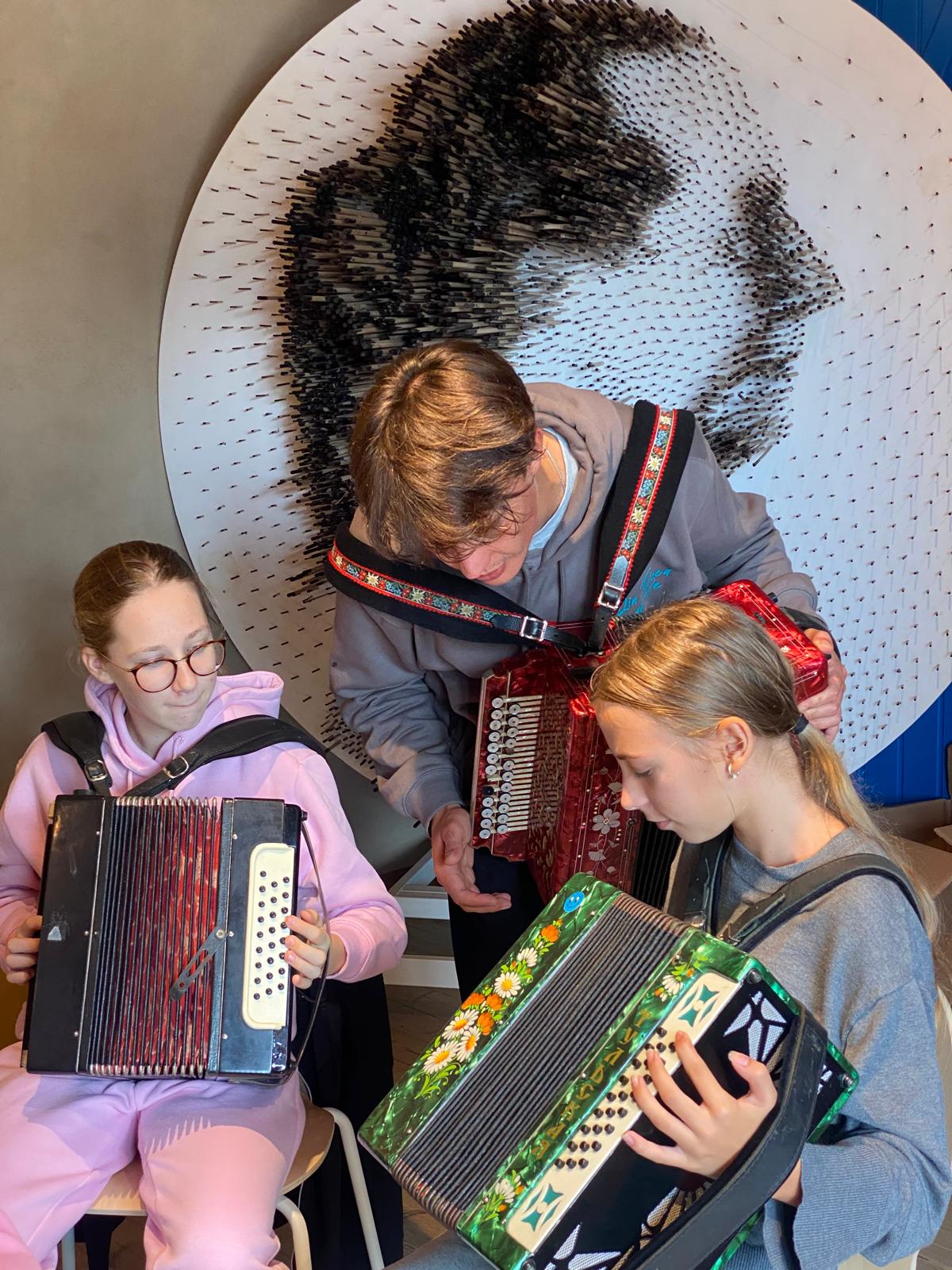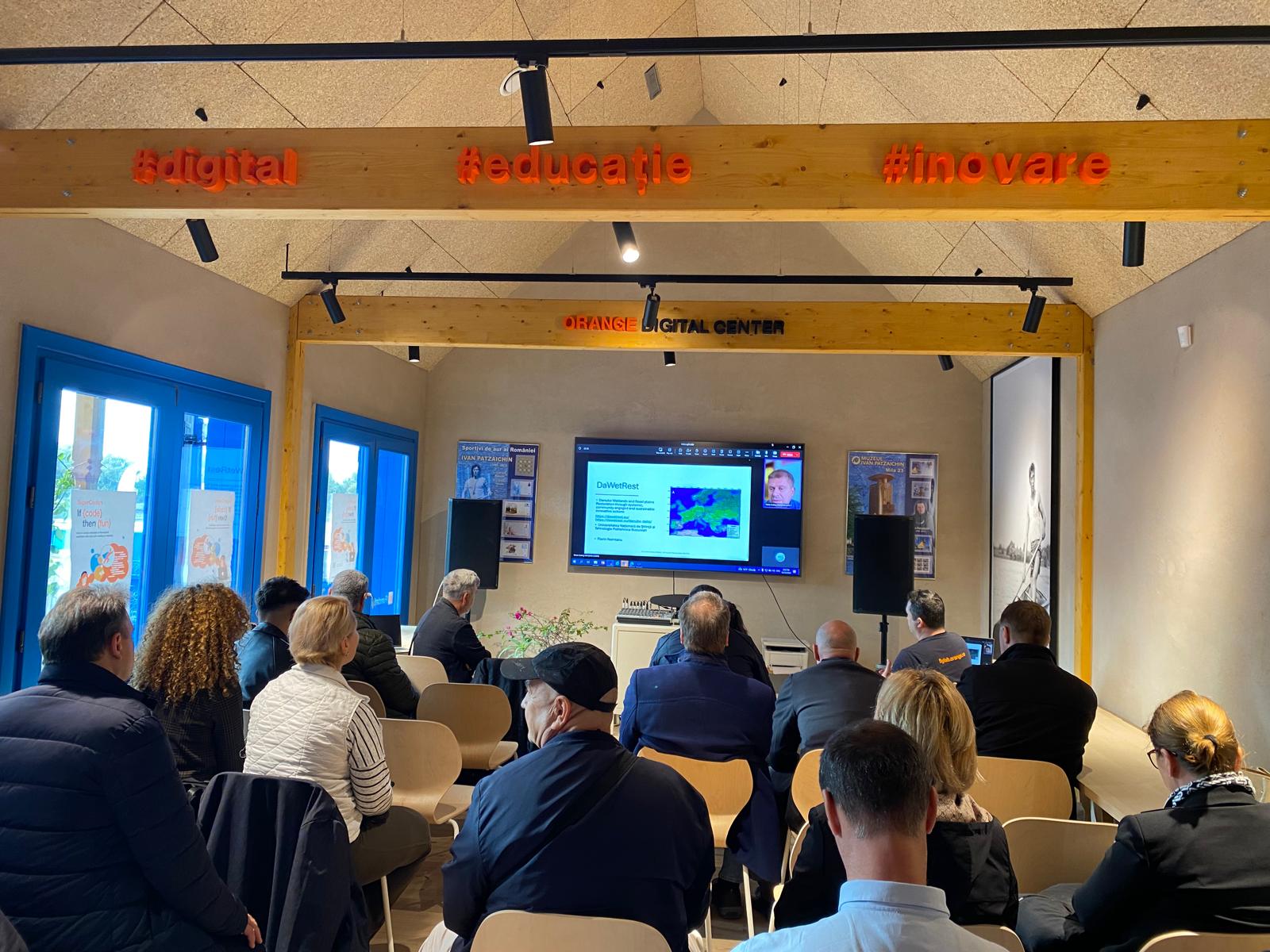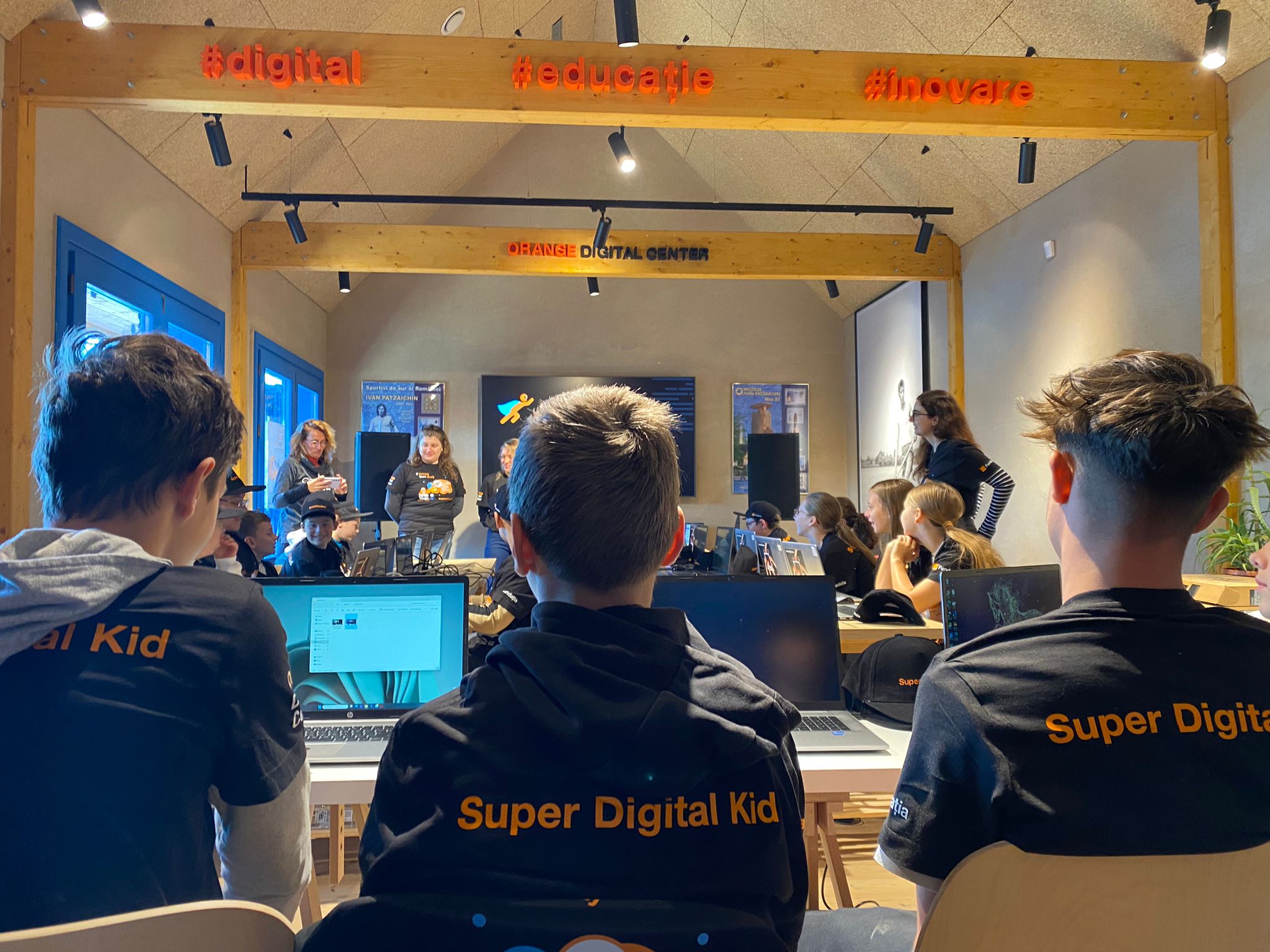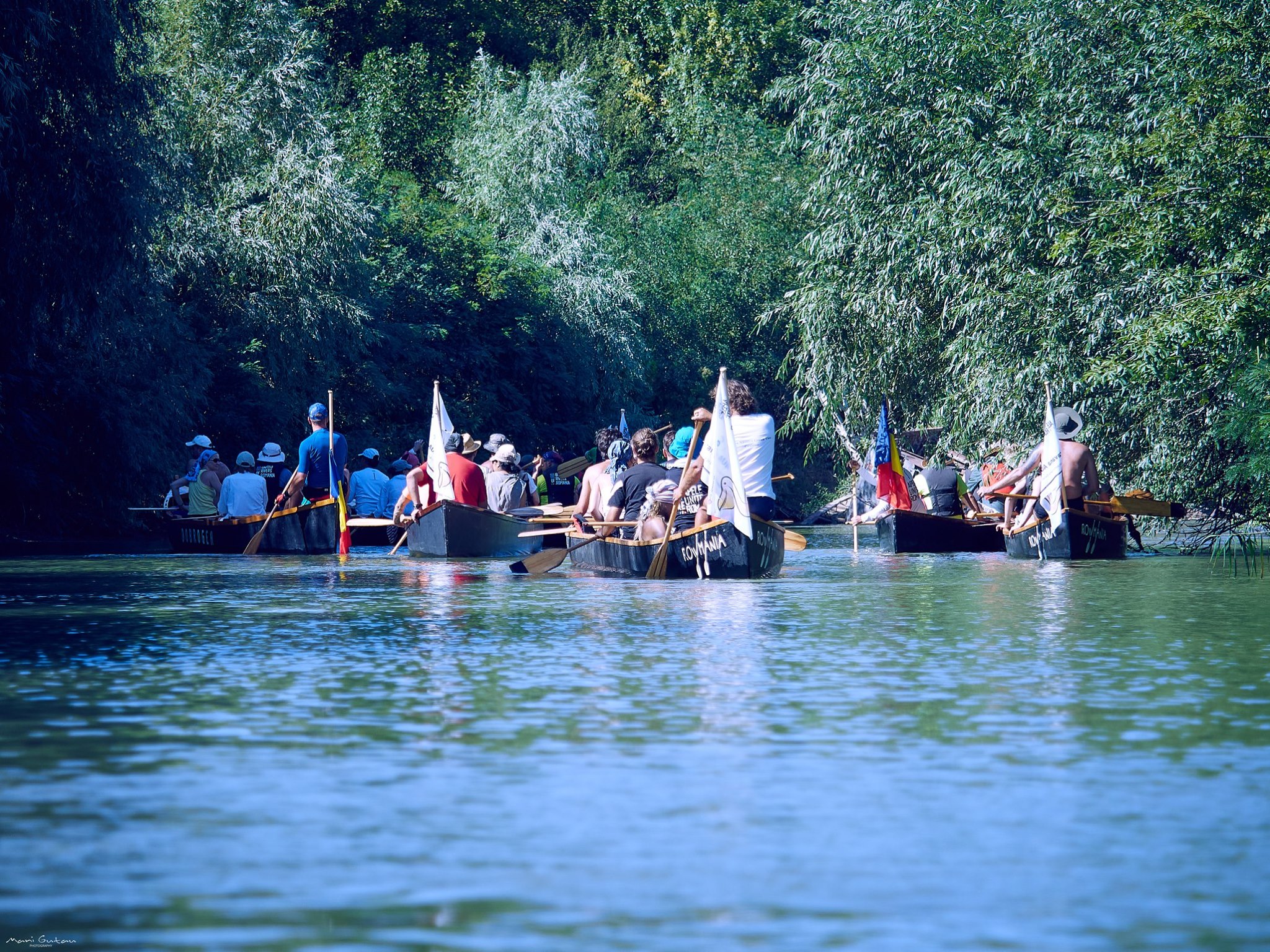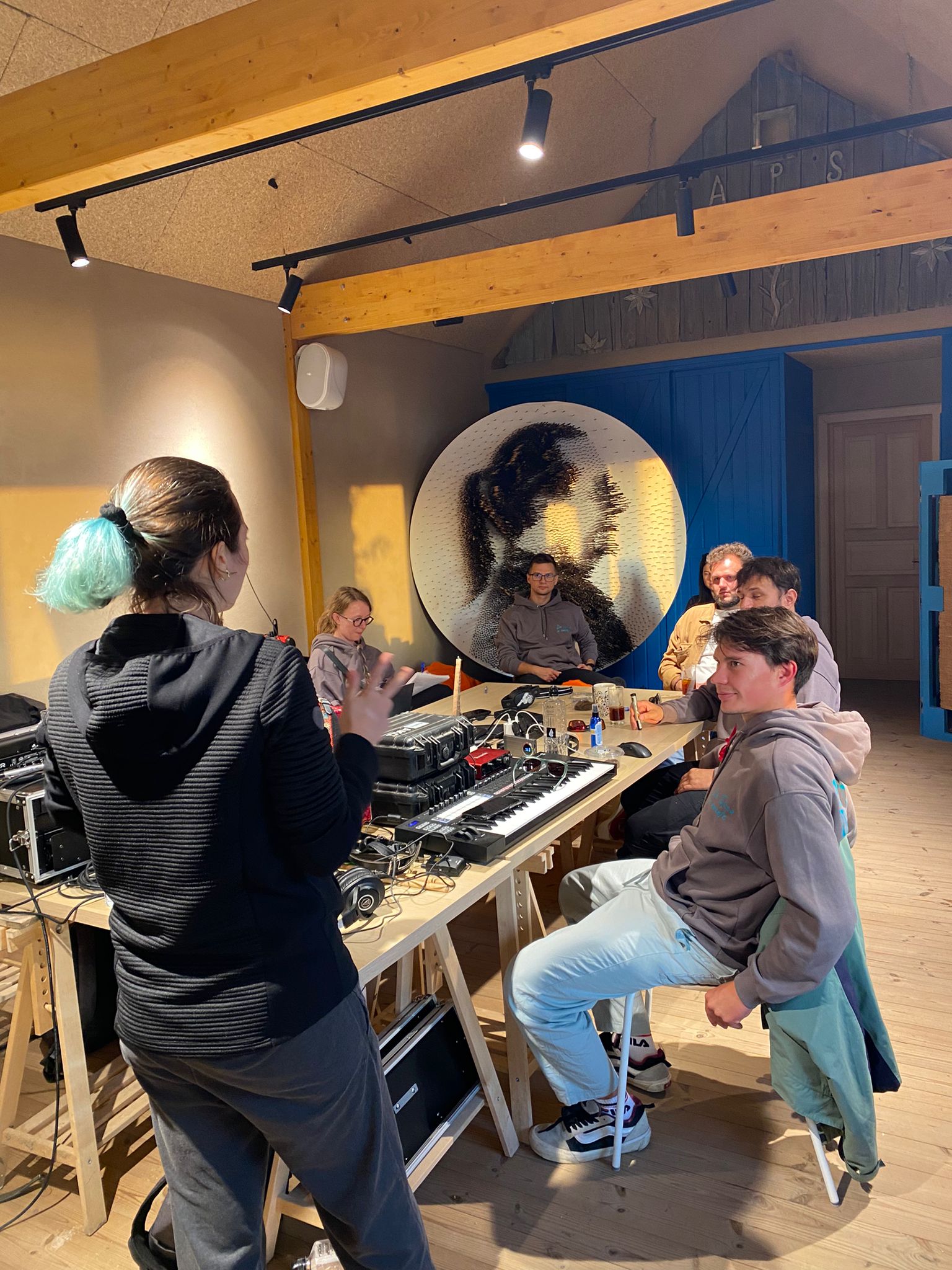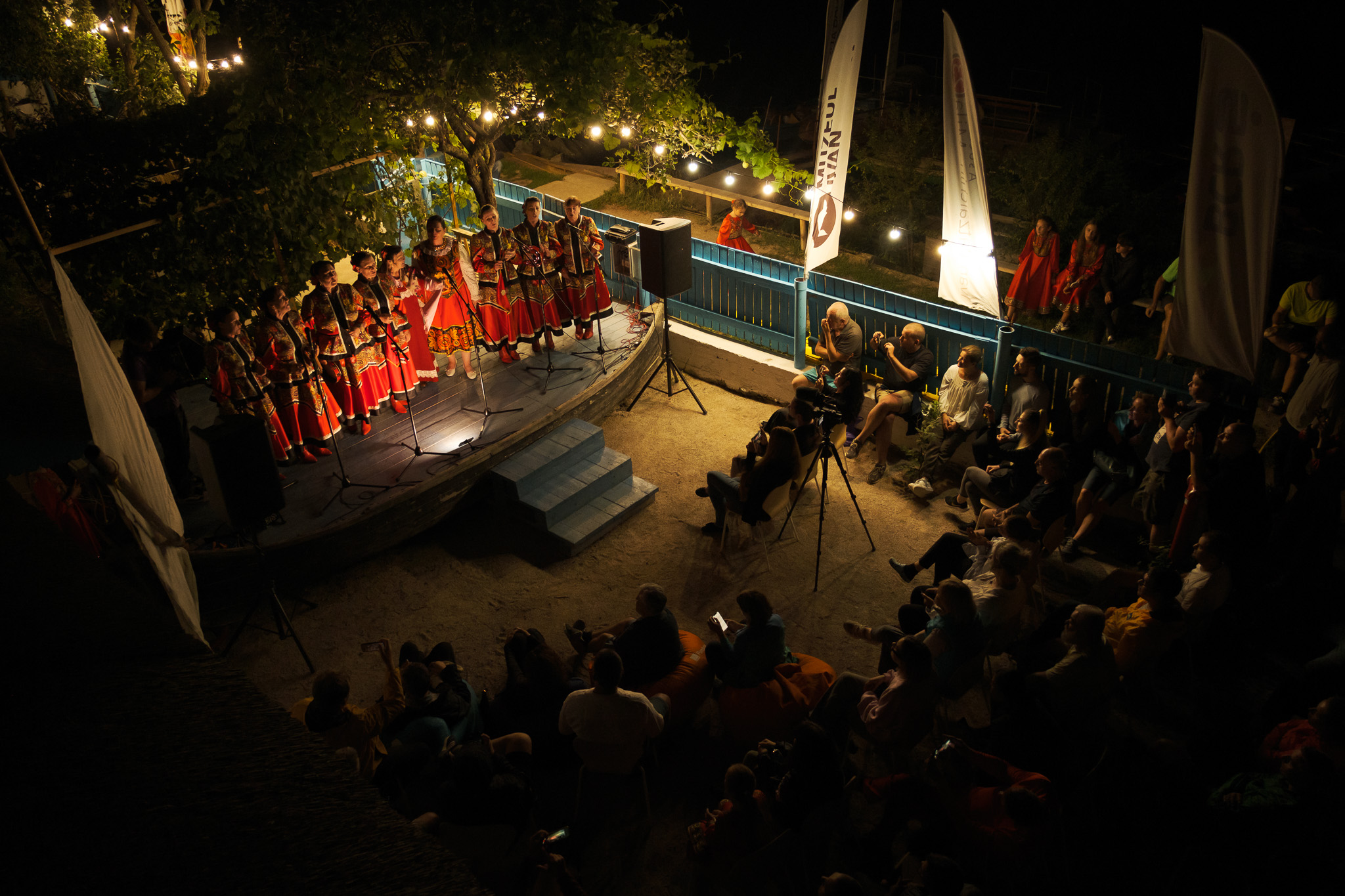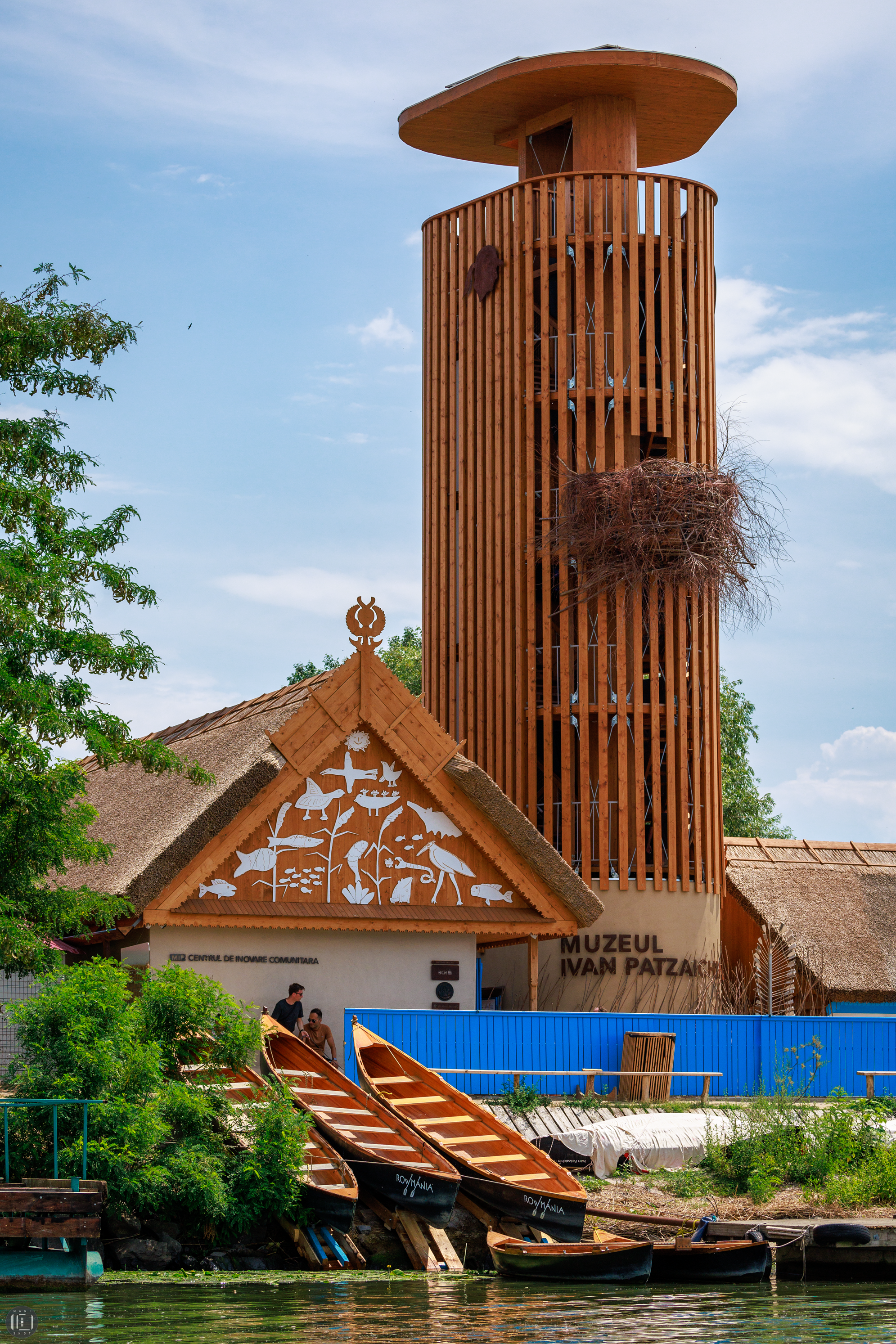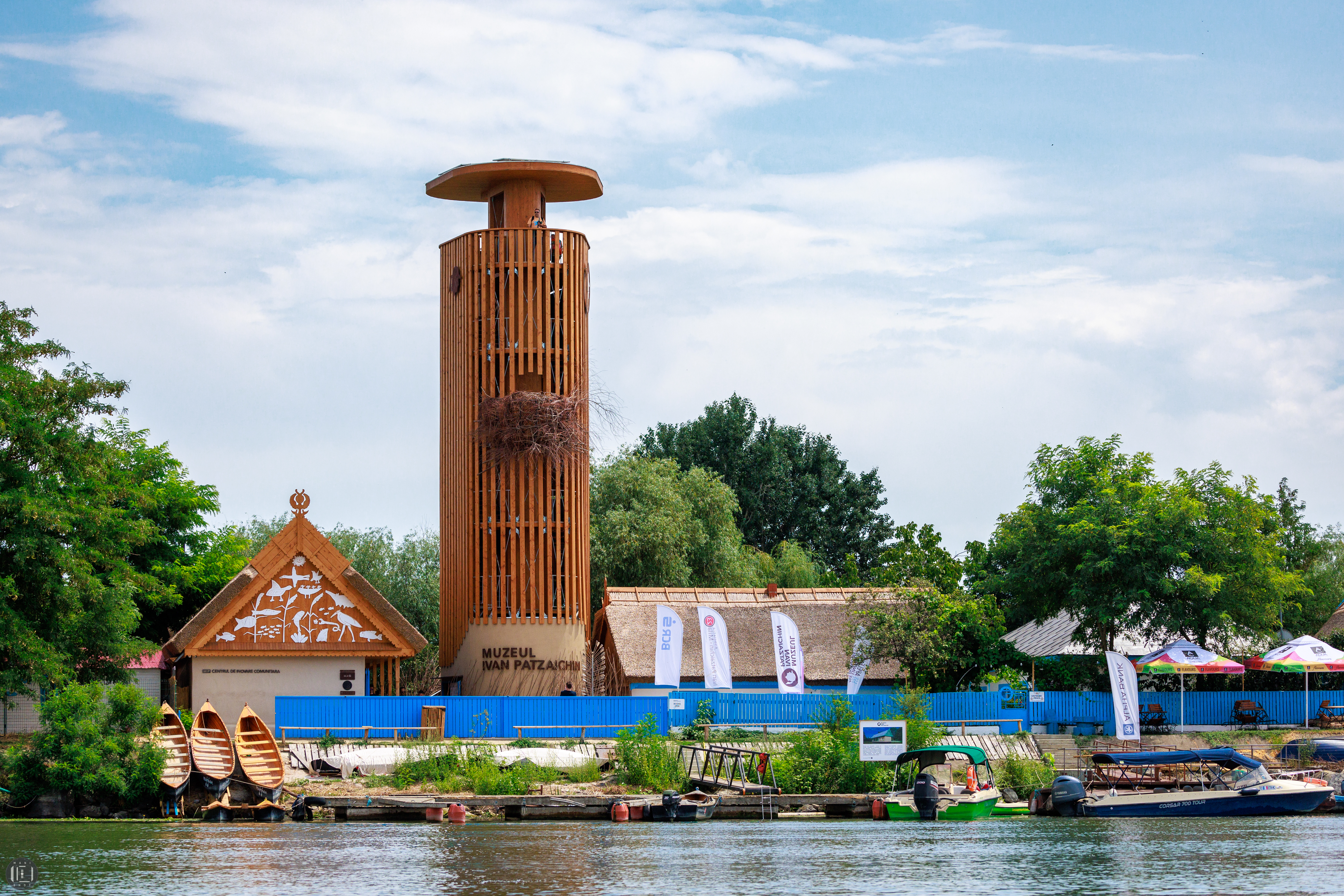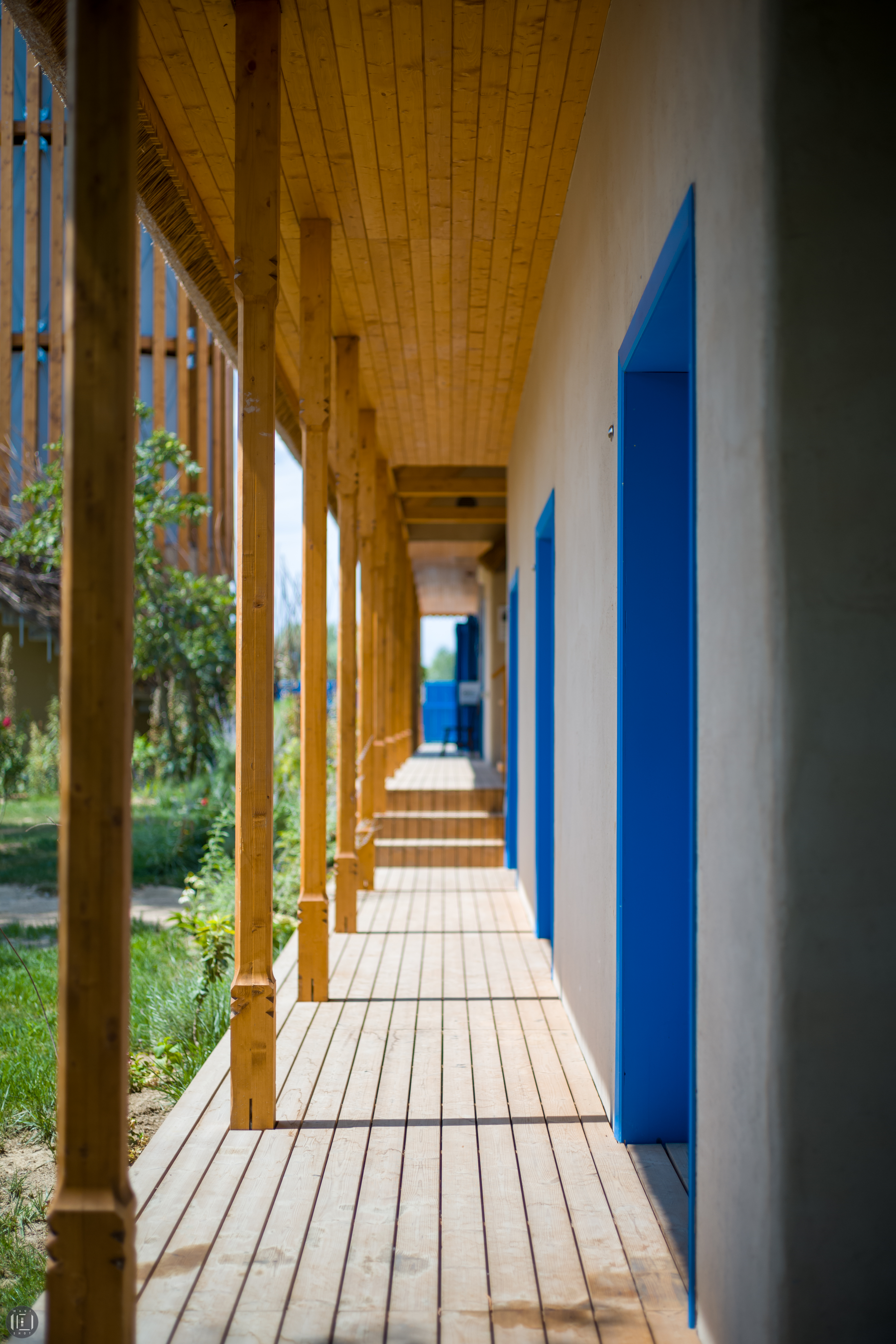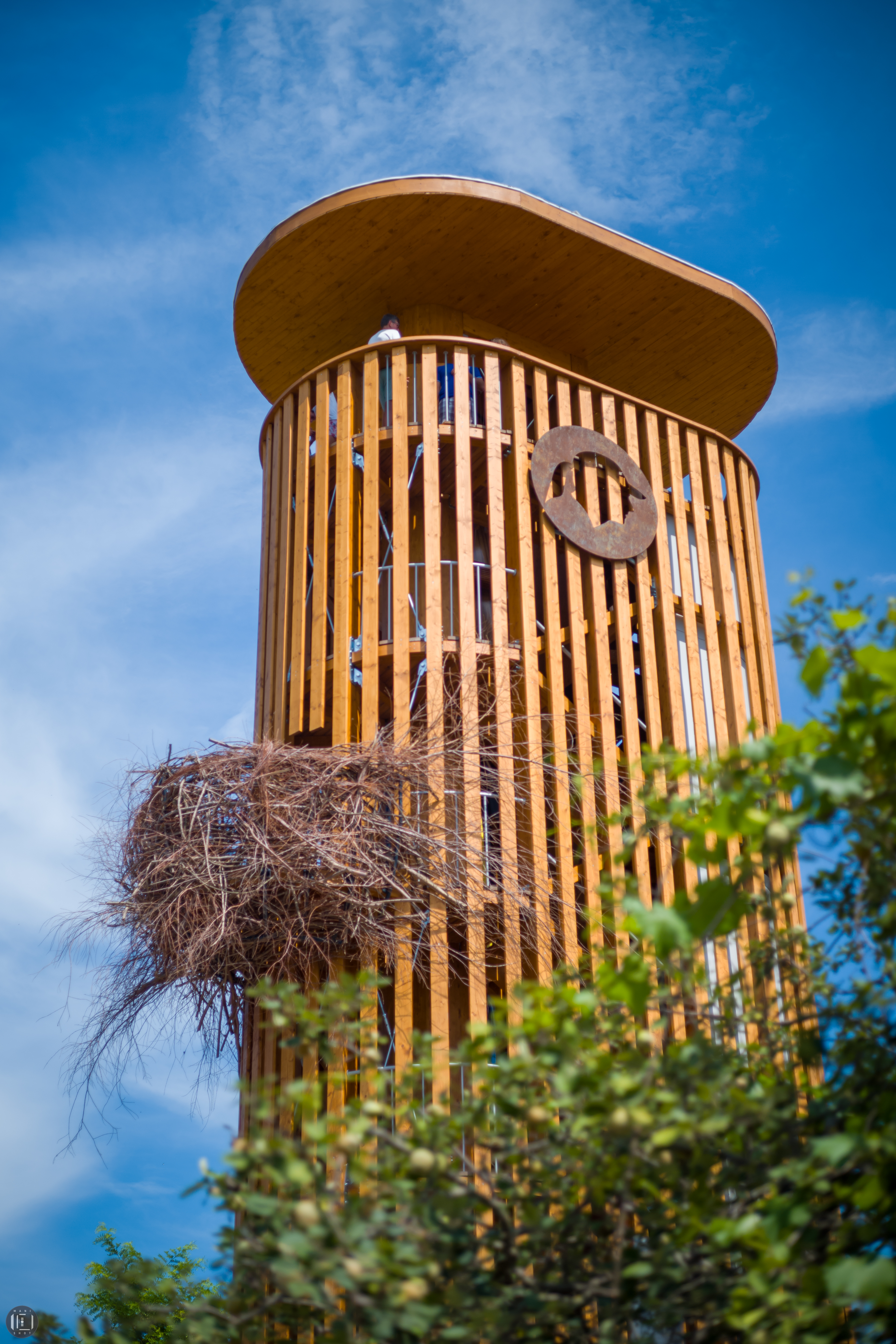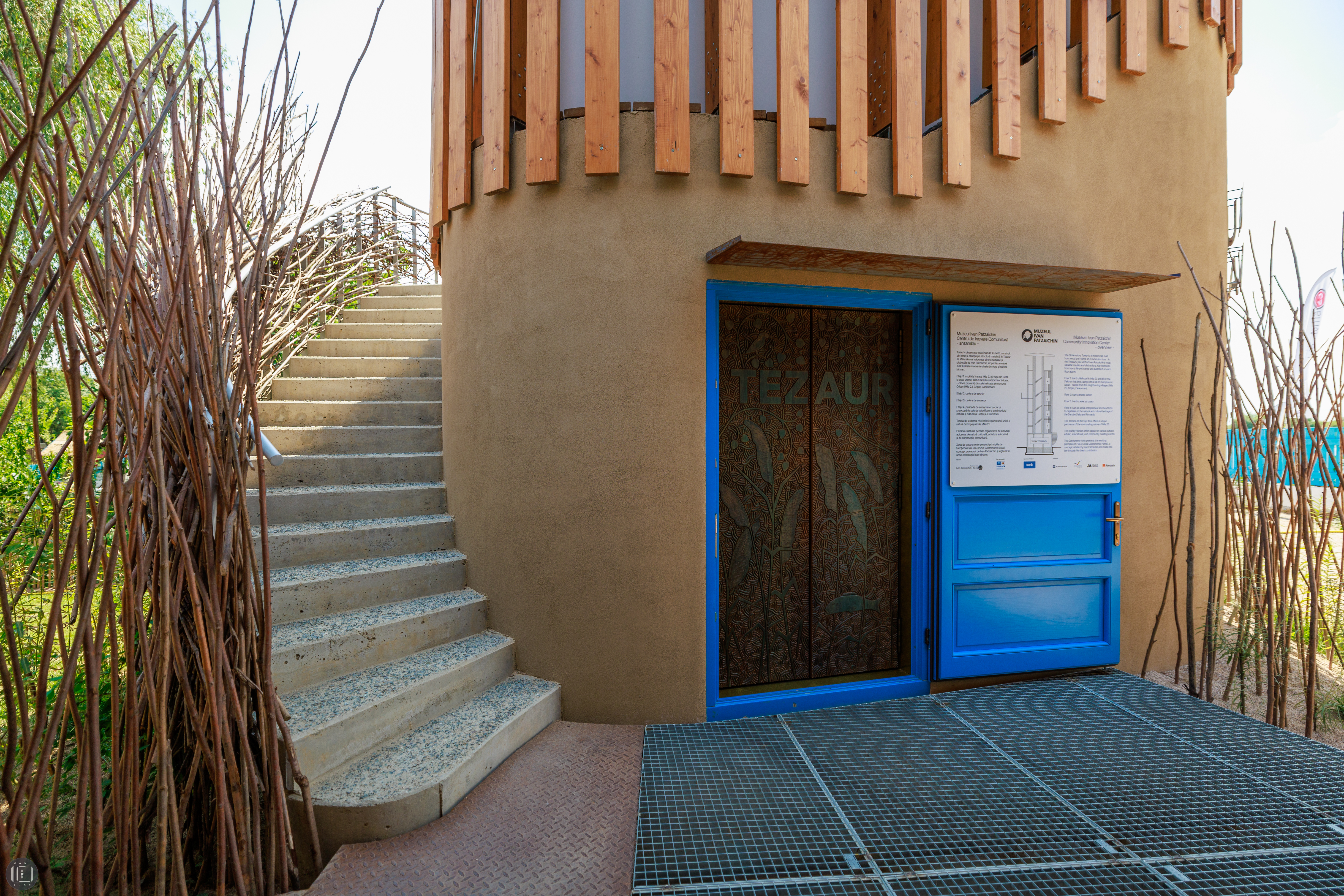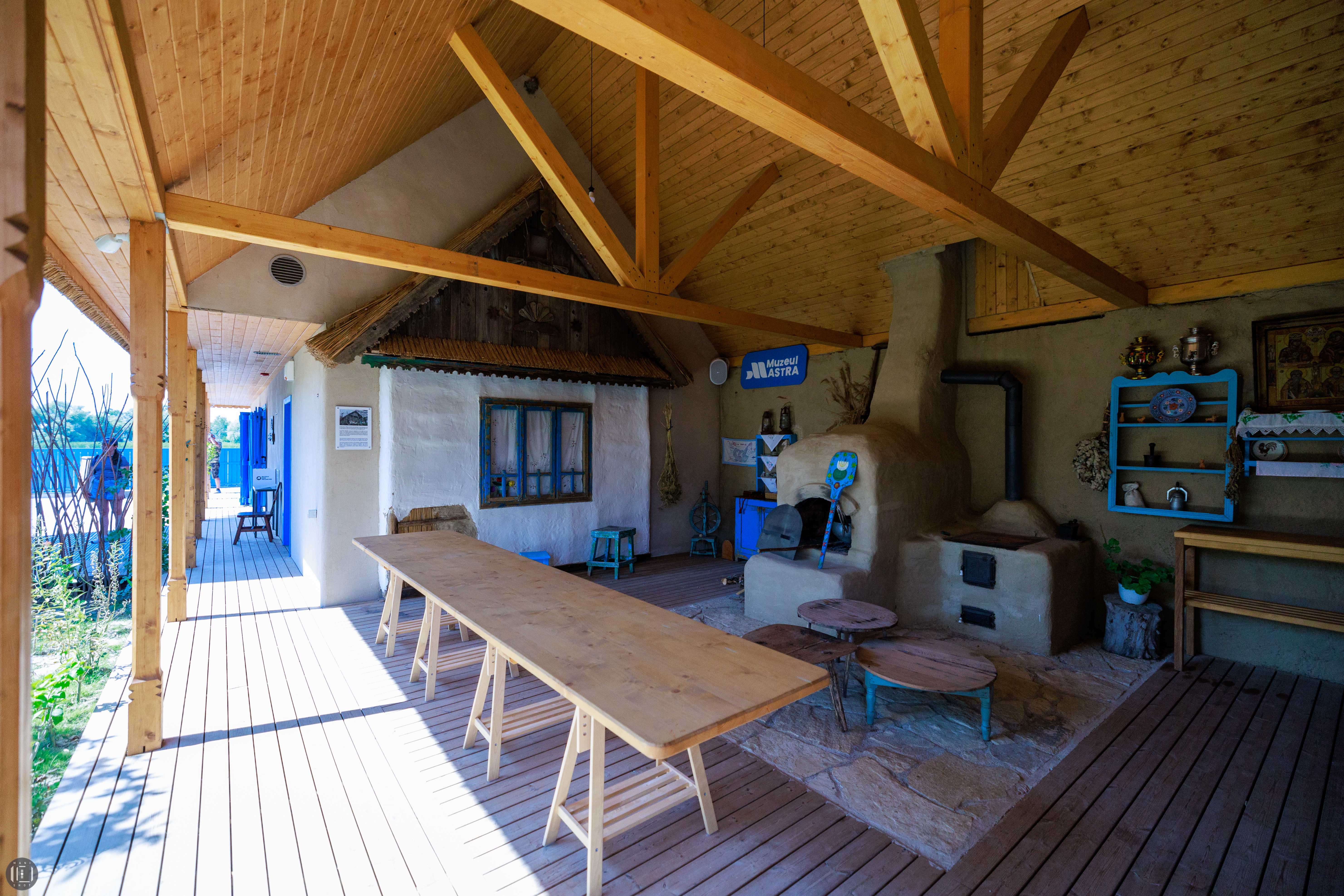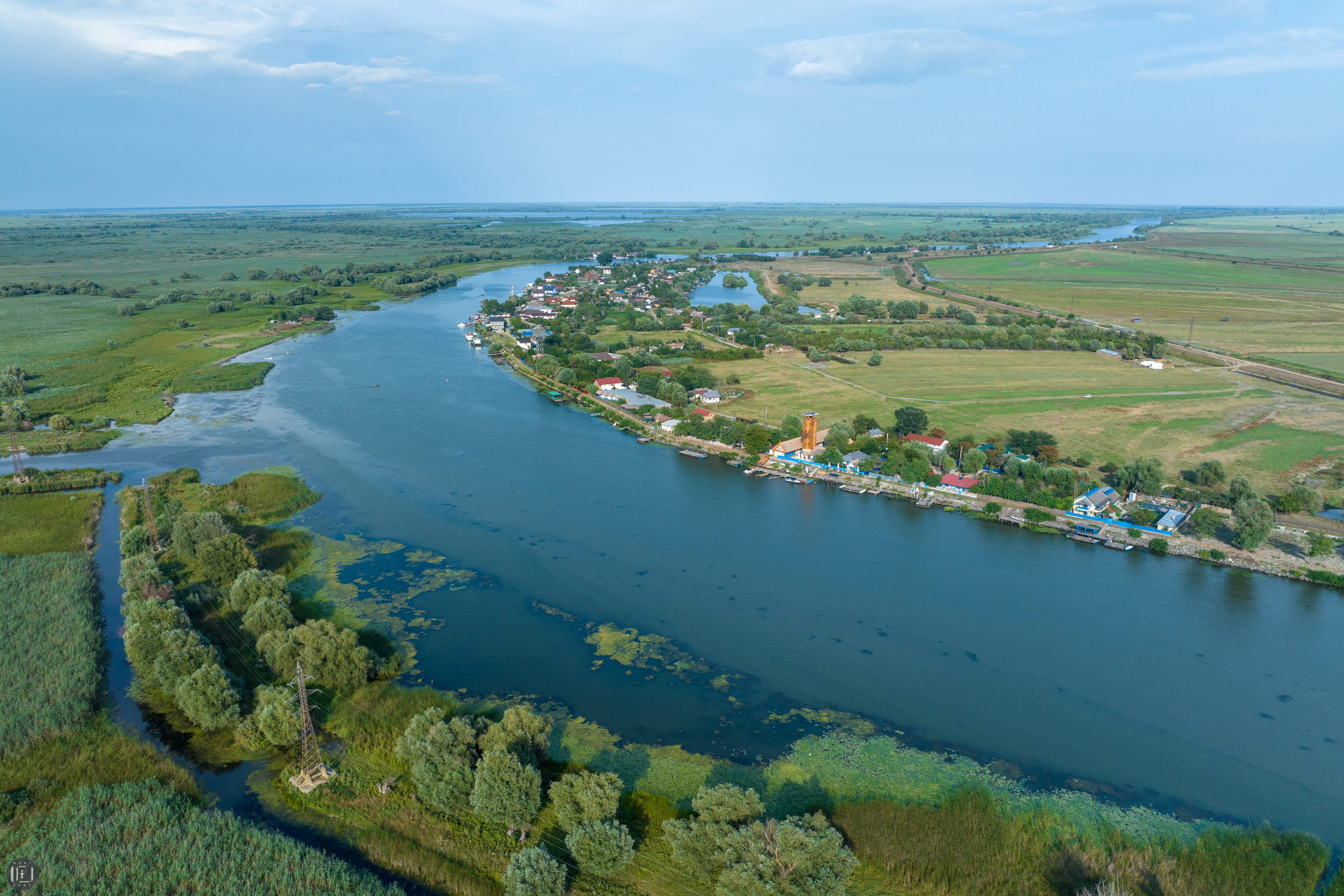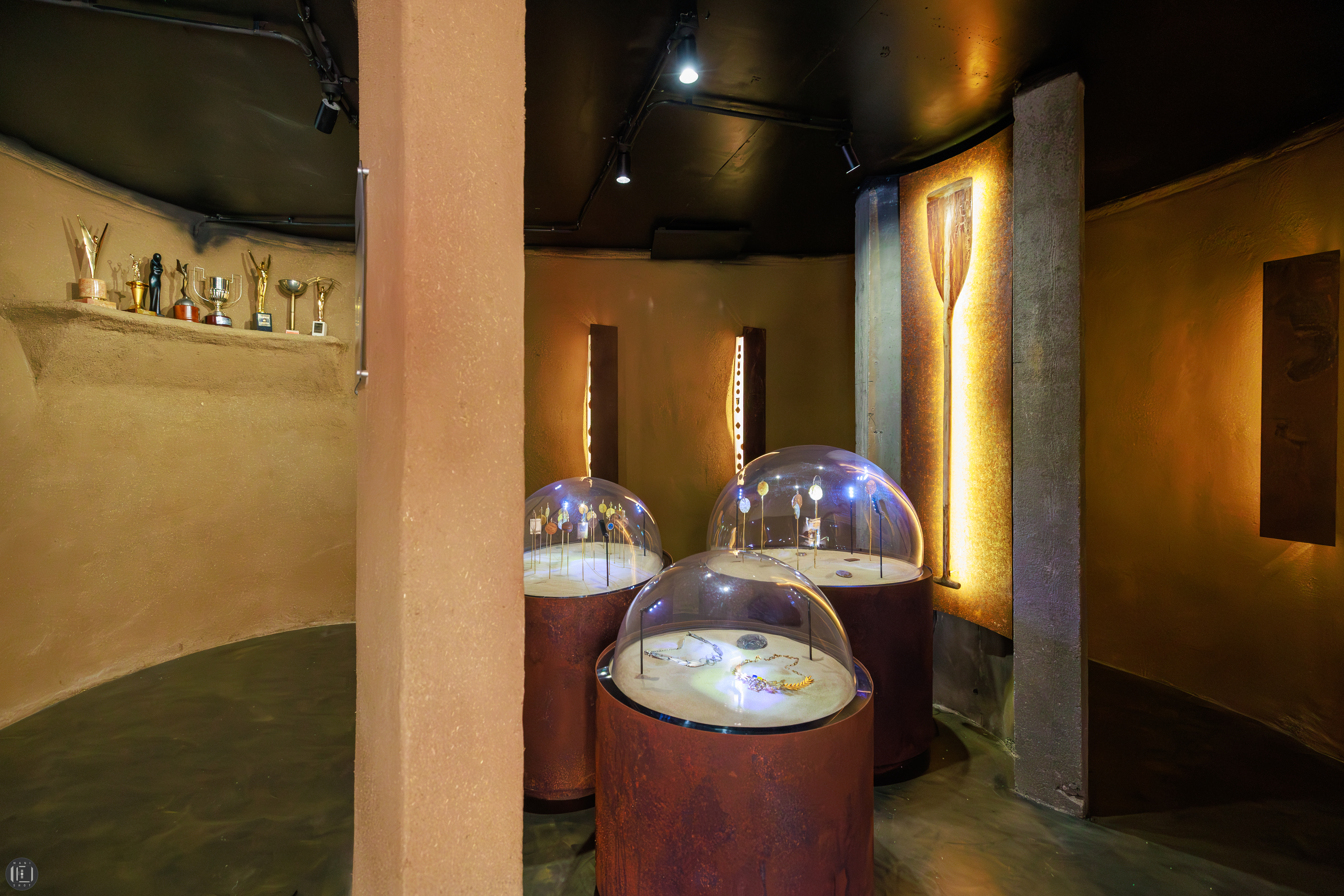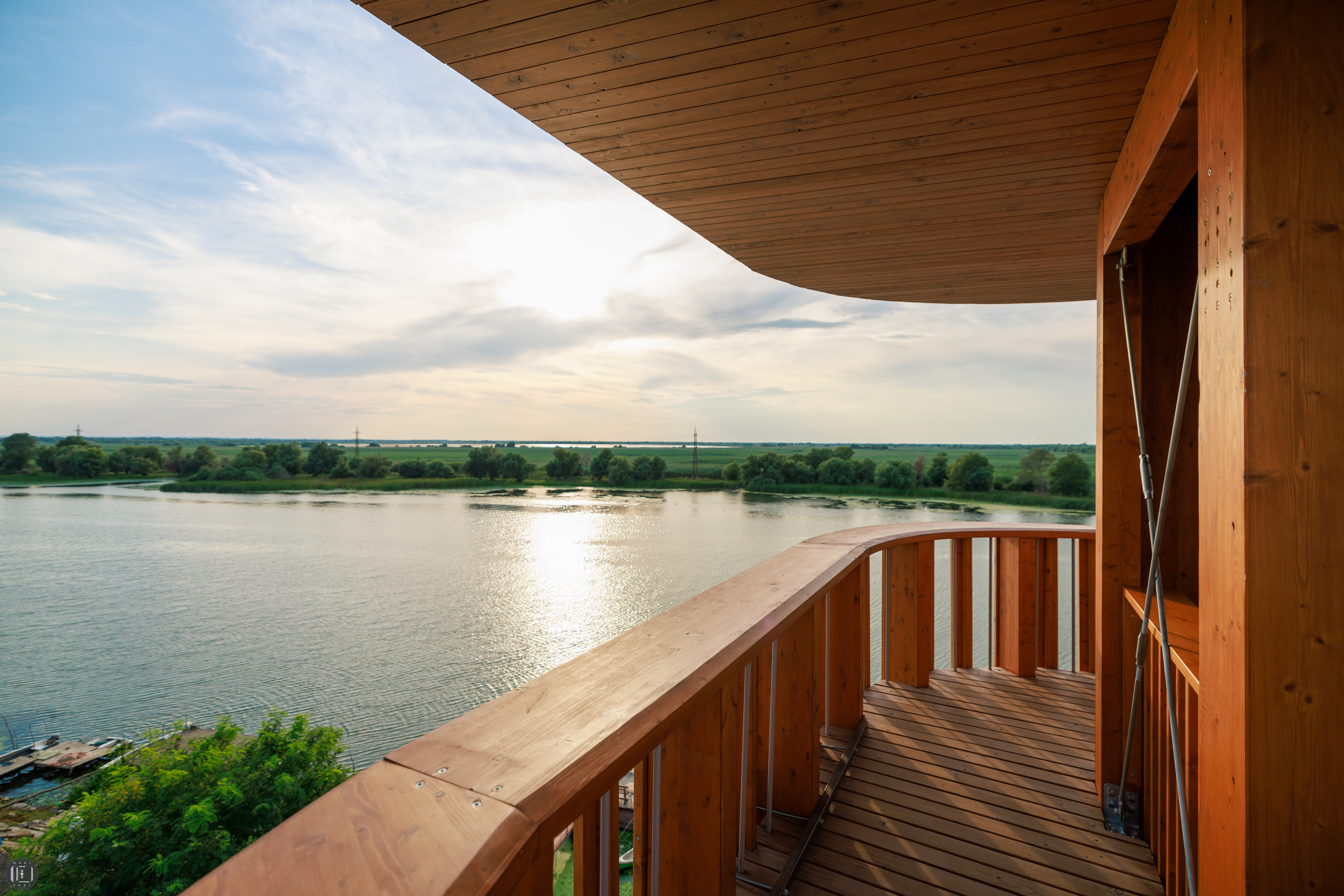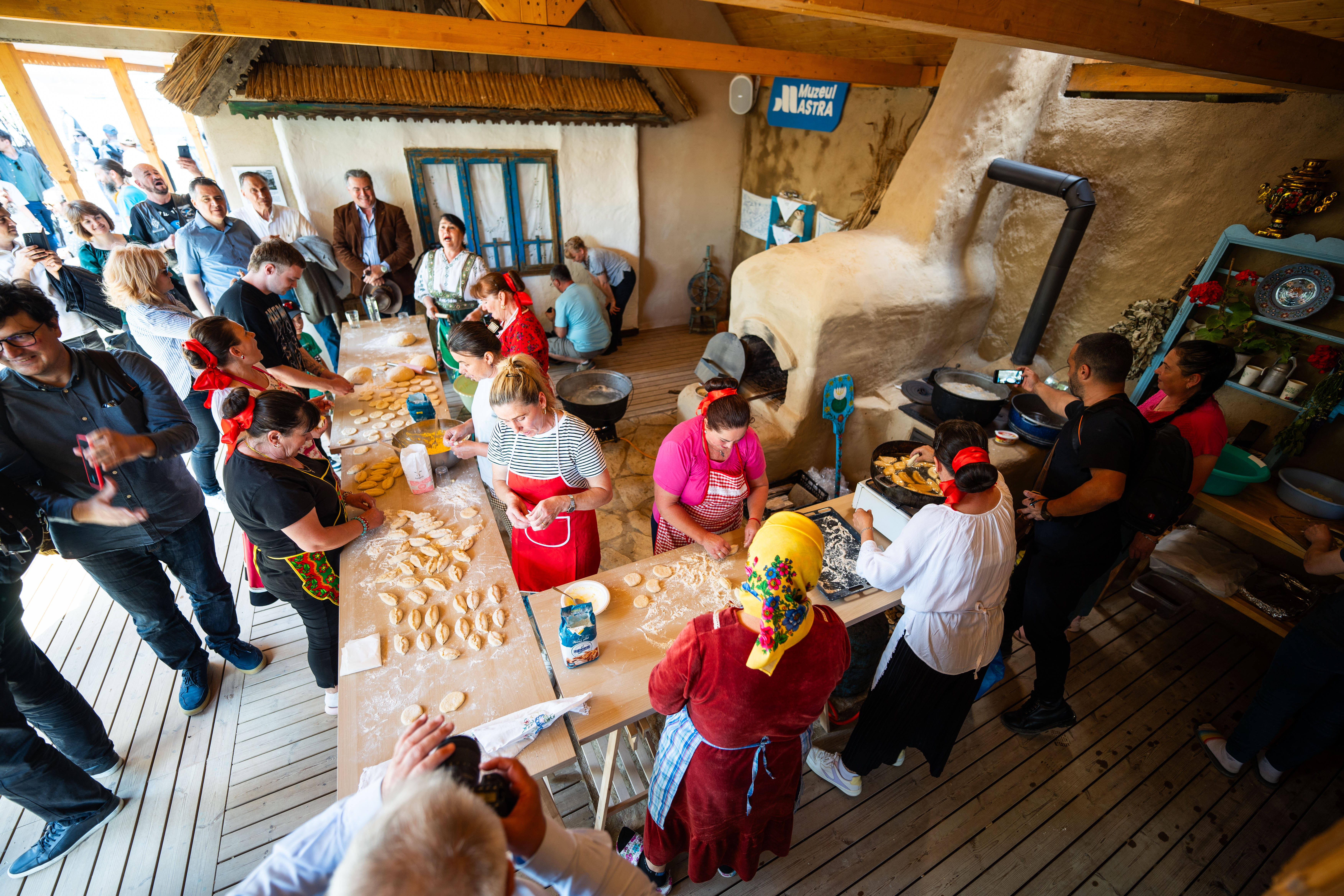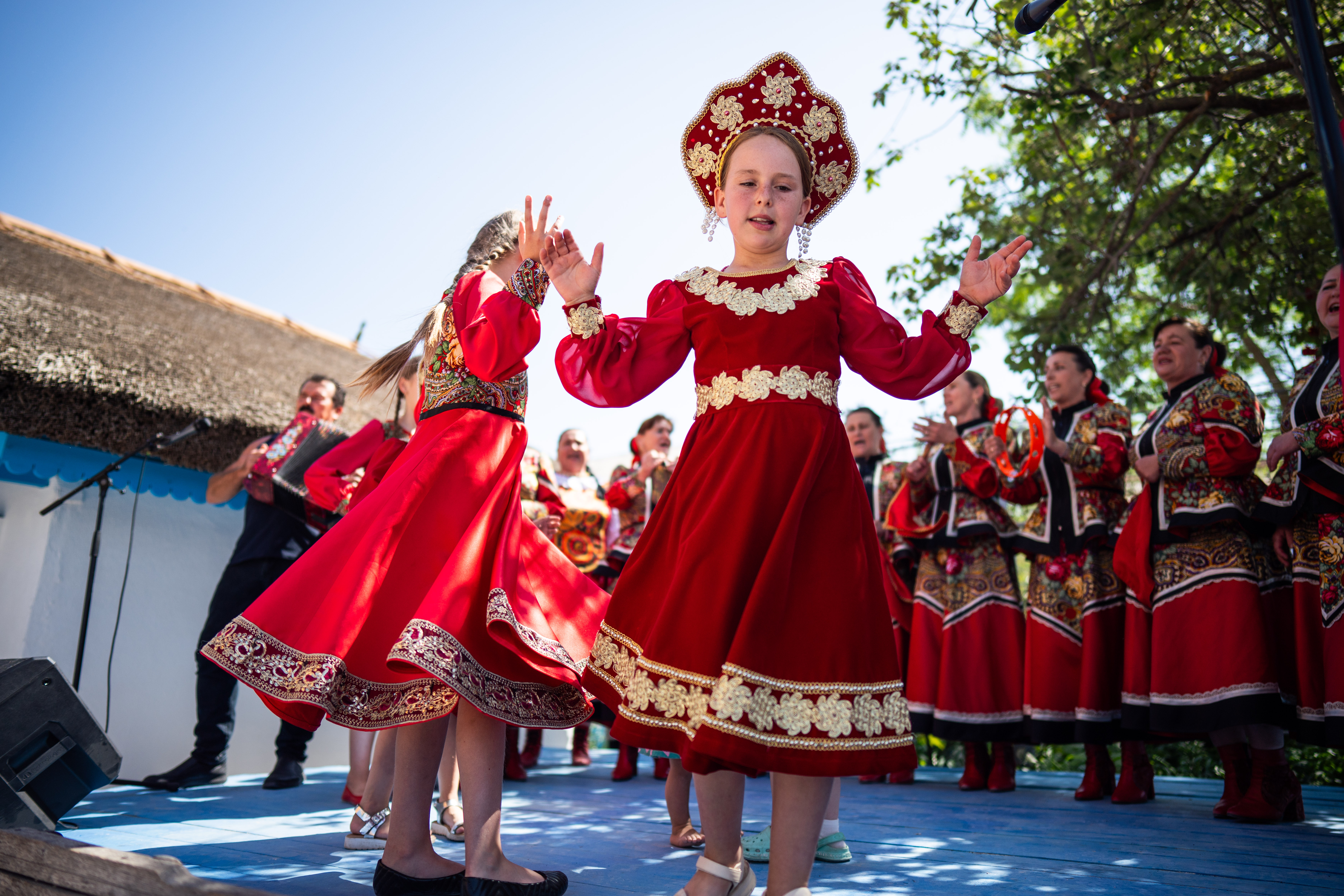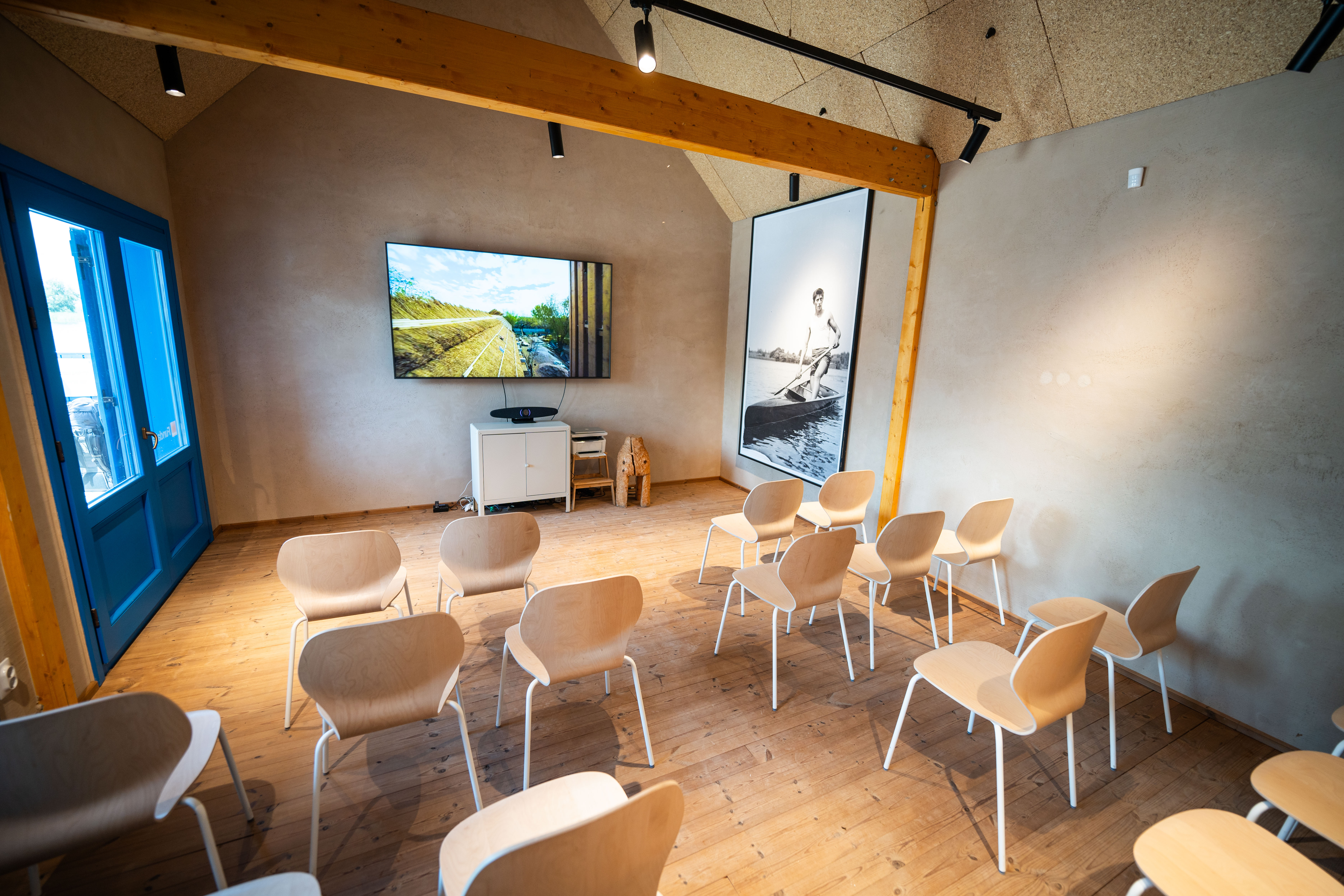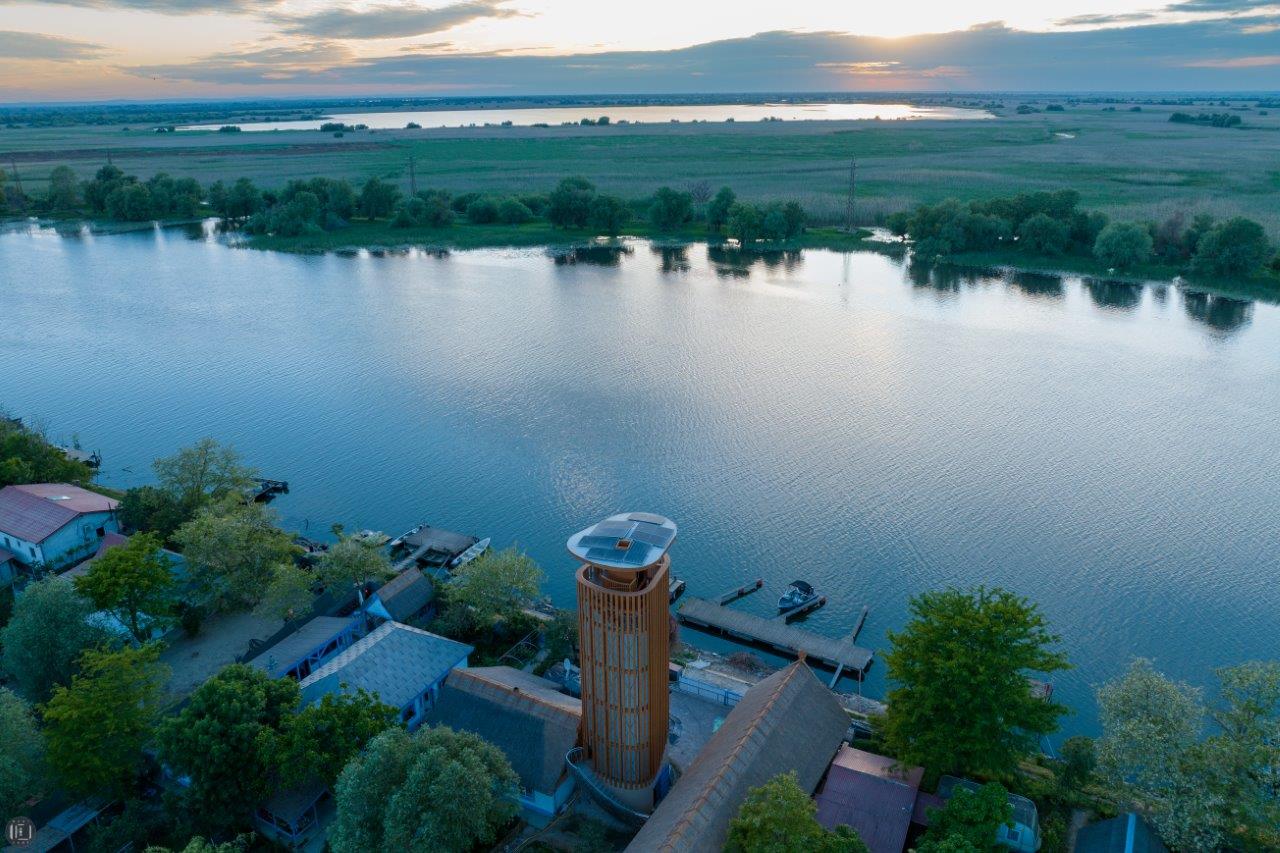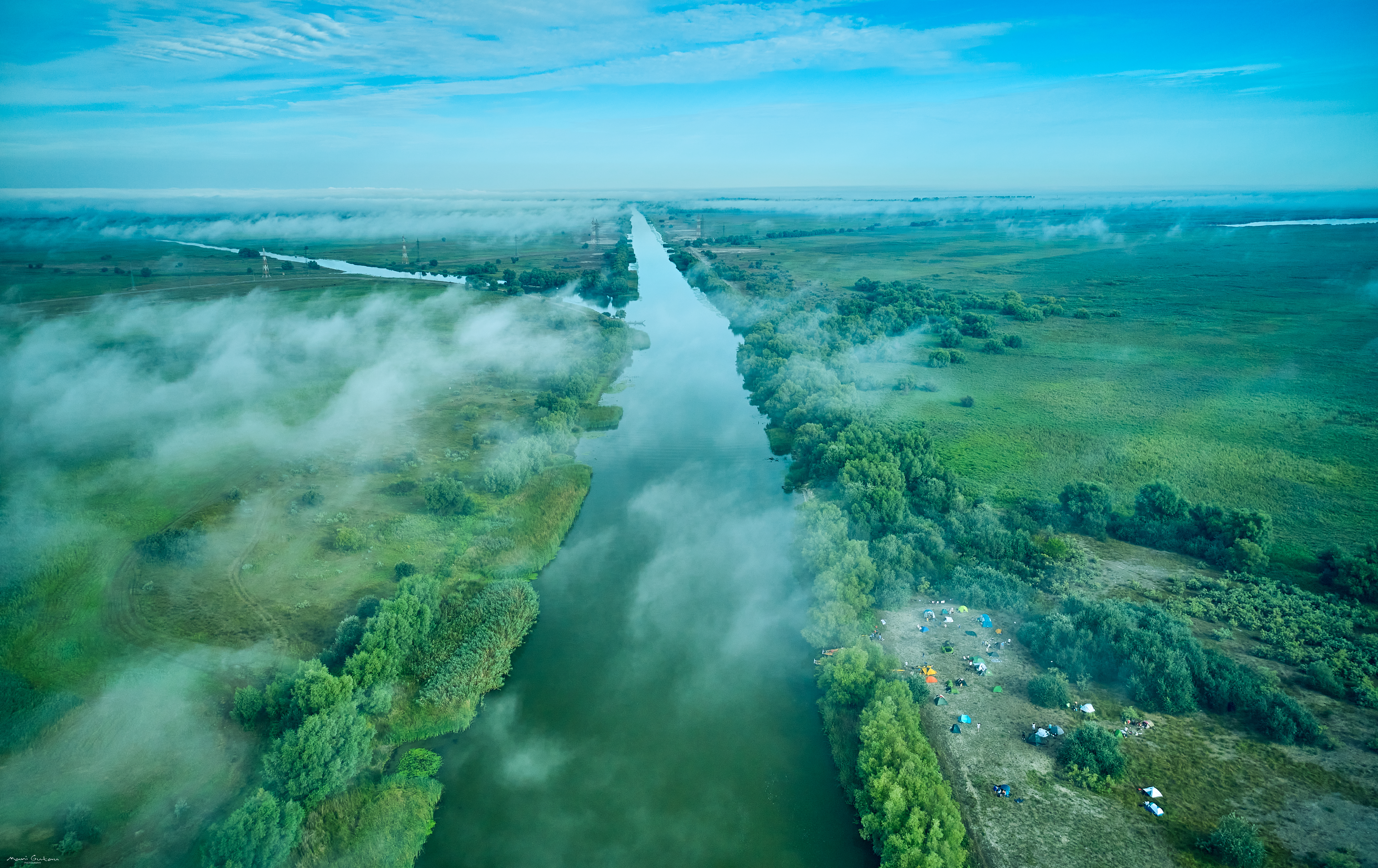Regaining a sense of belonging
Museum Ivan Patzaichin-Community Center
Museum Ivan Patzaichin - Community Innovation Center
Located in the Danube Delta, Romania, MIP-CIC is a modern cultural landmark blending cutting-edge architecture with sustainable practices. Beyond its memorial function, honoring Ivan Patzaichin's legacy, it fosters community-driven innovation, intergenerational dialogue, and collaboration. Serving as a hub for education, sustainable development & cultural events, it empowers Delta communities, showcasing their heritage. It contributes to local regeneration, creating a renewed sense of belonging.
Romania
Regional
Danube Delta, Romania
Mainly rural
It refers to a physical transformation of the built environment (hard investment)
Yes
2024-05-23
Yes
EMFF : European Maritime and Fisheries Fund
No
No
As a representative of an organisation
The Ivan Patzaichin Museum – Community Innovation Center (MIP-CIC) is a pioneering initiative in the Danube Delta, transforming a traditional museum into a dynamic platform for sustainable development, cultural preservation, and social inclusion.
Built on the site of Olympic multiple-champion in canoe Ivan Patzaichin’s parents' home, it integrates eco-contemporary building practices with local architectural traditions, using natural materials such as wood, hemp, and reed.
Designed to catalyze community-driven initiatives, MIP-CIC engages diverse groups, including local artisans, youth, researchers, cultural and eco-tourists. It hosts community events, educational programs, artistic residencies, and knowledge-sharing events that connect tradition with innovation. The observatory tower, central to the museum, provides a storytelling experience of Patzaichin’s life, inspiring visitors while celebrating local, cultural, and natural, heritage.
The project aligns with NEB’s core values by enhancing sustainability, fostering a sense of belonging, and promoting high-quality design and cultural expression. It addresses regional challenges such as depopulation, economic stagnation, and the need for sustainable tourism by creating opportunities for the community to thrive in harmony with their environment. Through cultural and eco-touristic activities, educational workshops, and a commitment to responsible resource use, MIP-CIC represents a replicable model for rural and protected areas, demonstrating how local heritage, in harmony with the natural environment and resources, can drive future-oriented development.
Built on the site of Olympic multiple-champion in canoe Ivan Patzaichin’s parents' home, it integrates eco-contemporary building practices with local architectural traditions, using natural materials such as wood, hemp, and reed.
Designed to catalyze community-driven initiatives, MIP-CIC engages diverse groups, including local artisans, youth, researchers, cultural and eco-tourists. It hosts community events, educational programs, artistic residencies, and knowledge-sharing events that connect tradition with innovation. The observatory tower, central to the museum, provides a storytelling experience of Patzaichin’s life, inspiring visitors while celebrating local, cultural, and natural, heritage.
The project aligns with NEB’s core values by enhancing sustainability, fostering a sense of belonging, and promoting high-quality design and cultural expression. It addresses regional challenges such as depopulation, economic stagnation, and the need for sustainable tourism by creating opportunities for the community to thrive in harmony with their environment. Through cultural and eco-touristic activities, educational workshops, and a commitment to responsible resource use, MIP-CIC represents a replicable model for rural and protected areas, demonstrating how local heritage, in harmony with the natural environment and resources, can drive future-oriented development.
Community-driven innovation
Sustainable architecture
Cultural heritage revitalization
Inclusive education
Eco-tourism & biodiversity conservation
MIP-CIC exemplifies sustainability by integrating ecological construction methods, promoting responsible tourism, and fostering environmental stewardship. The center is built using mostly locally sourced construction techniques, and renewable materials such as reed, hemp, and wood, ensuring a low carbon footprint while preserving the Delta’s unique architectural identity, through elements such as structure, roofing, decoration, and volumetry. Its energy-efficient design, heat pump, and solar panels are setting a benchmark for sustainable buildings in the region.
The museum supports sustainable livelihoods by promoting traditional crafts, local gastronomy, and eco-tourism, encouraging economic resilience while respecting natural ecosystems. The Local Gastronomic Point, a key feature of the space, showcases locally sourced food, prepared exclusively by local techniques, reducing environmental impact and celebrating regional identity. Additionally, the center educates visitors and the local population on biodiversity conservation, slow mobility, and circular economy principles, reinforcing sustainable practices across generations.
By addressing environmental degradation and unsustainable tourism in the Delta, MIP-CIC acts as a blueprint for integrating cultural heritage into sustainability strategies. It serves as a model for similar rural and protected areas, demonstrating how history, architecture, and community participation can contribute to long-term environmental and social well-being.
The museum supports sustainable livelihoods by promoting traditional crafts, local gastronomy, and eco-tourism, encouraging economic resilience while respecting natural ecosystems. The Local Gastronomic Point, a key feature of the space, showcases locally sourced food, prepared exclusively by local techniques, reducing environmental impact and celebrating regional identity. Additionally, the center educates visitors and the local population on biodiversity conservation, slow mobility, and circular economy principles, reinforcing sustainable practices across generations.
By addressing environmental degradation and unsustainable tourism in the Delta, MIP-CIC acts as a blueprint for integrating cultural heritage into sustainability strategies. It serves as a model for similar rural and protected areas, demonstrating how history, architecture, and community participation can contribute to long-term environmental and social well-being.
MIP-CIC’s architecture harmonizes with the Danube Delta’s vernacular style while embracing contemporary sustainability and design principles. Designed by architects Teodor Frolu and Sorin Istudor, the structure incorporates natural materials and techniques, ensuring a seamless integration with the landscape. The museum’s observatory tower, inspired by Patzaichin’s life journey, creates a compelling visual narrative that engages visitors in a multi-sensory exploration of heritage, sport, and nature, and stands as the region’s tallest cultural landmark at 18 m.
Beyond its physical design, the center curates a rich cultural program that enhances aesthetic and experiential quality. It serves as a platform for artistic residencies, exhibitions, and performances that bridge tradition with contemporary creativity. Leveraging its state-of-the-art infrastructure, the center has hosted several creative residencies in fields such as music, visual arts, and research, along with workshops in local traditional music and dances for children and rehearsals by the local Lipovan Choir from Mila 23.
Additionally, several contemporary artists and ensembles have performed on the museum’s garden stage, complemented by art and documentary film screenings and workshops aimed at identifying local heritage that can be revitalized in a contemporary context. Collaborations with local and international artists generate a dynamic cultural dialogue, reinforcing the museum’s role as a hub of creative exchange.
Through immersive storytelling, interactive installations, and engaging exhibitions, MIP-CIC deepens visitors’ emotional and intellectual connection to the Delta’s cultural and natural heritage. Its aesthetic appeal is not merely visual but experiential, offering a holistic, participatory journey that transforms the act of visiting into an act of belonging.
Beyond its physical design, the center curates a rich cultural program that enhances aesthetic and experiential quality. It serves as a platform for artistic residencies, exhibitions, and performances that bridge tradition with contemporary creativity. Leveraging its state-of-the-art infrastructure, the center has hosted several creative residencies in fields such as music, visual arts, and research, along with workshops in local traditional music and dances for children and rehearsals by the local Lipovan Choir from Mila 23.
Additionally, several contemporary artists and ensembles have performed on the museum’s garden stage, complemented by art and documentary film screenings and workshops aimed at identifying local heritage that can be revitalized in a contemporary context. Collaborations with local and international artists generate a dynamic cultural dialogue, reinforcing the museum’s role as a hub of creative exchange.
Through immersive storytelling, interactive installations, and engaging exhibitions, MIP-CIC deepens visitors’ emotional and intellectual connection to the Delta’s cultural and natural heritage. Its aesthetic appeal is not merely visual but experiential, offering a holistic, participatory journey that transforms the act of visiting into an act of belonging.
Inclusion is at the core of MIP-CIC’s mission, driving initiatives that ensure accessibility, affordability, and meaningful community engagement. The center is designed as an open, welcoming space where locals and visitors can participate in cultural, educational, and tourism-related activities and educational workshops, free of charge. By prioritizing intergenerational exchange, our programs are tailored to children, youth, and seniors within the Delta communities, ensuring that every voice is listened and heard.
Our innovative participatory governance model actively involves local stakeholders in decision-making and program planning. This approach empowers community members to take ownership of cultural and sustainability initiatives, reinforcing long-term resilience and social cohesion. Activities such as heritage valorization workshops, skills development sessions, and skill-sharing initiatives provide platforms for isolated voices and promote a renewed sense of belonging to the Deltaic community.
An example of our commitment to inclusion is the Orange Digital Center (educational space and learning resources), launched in collaboration with Orange Foundation. This initiative equips local students with digital skills in coding and robotics, and adults with needed digital and technology abilities, bridging the digital divide and opening new career opportunities. Additionally, the center revitalizes and celebrates traditional Lippovan music and gastronomy, preserving cultural heritage while engaging the community in creative expression.
By integrating modern educational programs with the preservation of cultural traditions, MIP-CIC stands as a model of social innovation and sustainable development. MIP-CIC sets a new standard for cultural institutions, demonstrating how they can actively contribute to building equitable, diverse, and engaged communities.
Our innovative participatory governance model actively involves local stakeholders in decision-making and program planning. This approach empowers community members to take ownership of cultural and sustainability initiatives, reinforcing long-term resilience and social cohesion. Activities such as heritage valorization workshops, skills development sessions, and skill-sharing initiatives provide platforms for isolated voices and promote a renewed sense of belonging to the Deltaic community.
An example of our commitment to inclusion is the Orange Digital Center (educational space and learning resources), launched in collaboration with Orange Foundation. This initiative equips local students with digital skills in coding and robotics, and adults with needed digital and technology abilities, bridging the digital divide and opening new career opportunities. Additionally, the center revitalizes and celebrates traditional Lippovan music and gastronomy, preserving cultural heritage while engaging the community in creative expression.
By integrating modern educational programs with the preservation of cultural traditions, MIP-CIC stands as a model of social innovation and sustainable development. MIP-CIC sets a new standard for cultural institutions, demonstrating how they can actively contribute to building equitable, diverse, and engaged communities.
MIP-CIC embodies NEB’s participatory process by involving the local community in all stages—from conceptualization to daily activities, as the management of the space is ensured by locals. The project was shaped through consultations with residents, local artisans, researchers, and authorities, ensuring it reflects the community’s needs. Regular workshops, public discussions, and youth engagement initiatives have strengthened civic participation, fostering a sense of ownership and belonging among locals.
Multi-level engagement has been crucial to MIP-CIC’s success. The project brought together local actors (community members, NGOs), regional stakeholders (Tulcea County Council, cultural institutions), and national and European partners (Ministry of Culture, UNESCO). This multi-layered collaboration ensured financial sustainability, policy support, and cultural exchange, enriching the project’s impact.
The transdisciplinary approach of MIP-CIC is another hallmark of its innovation. It integrates expertise from architecture, cultural heritage, environmental science, education, technology, communication, and social innovation, ensuring a holistic and impactful intervention. By combining traditional knowledge with contemporary solutions, MIP-CIC creates a replicable model for sustainable community hubs.
Multi-level engagement has been crucial to MIP-CIC’s success. The project brought together local actors (community members, NGOs), regional stakeholders (Tulcea County Council, cultural institutions), and national and European partners (Ministry of Culture, UNESCO). This multi-layered collaboration ensured financial sustainability, policy support, and cultural exchange, enriching the project’s impact.
The transdisciplinary approach of MIP-CIC is another hallmark of its innovation. It integrates expertise from architecture, cultural heritage, environmental science, education, technology, communication, and social innovation, ensuring a holistic and impactful intervention. By combining traditional knowledge with contemporary solutions, MIP-CIC creates a replicable model for sustainable community hubs.
MIP-CIC successfully engaged stakeholders at multiple levels, fostering collaboration among local, regional, national, and European actors. At the local level, the residents of Mila 23, local artisans, and NGOs played a fundamental role in shaping the project’s vision and ensuring it addressed community needs. Regional support from Tulcea County Council and local institutions in the Danube Delta and Tulcea County provided essential resources and policy alignment to enhance the project’s sustainability.
At the national level, the Ministry of Culture and the Romanian National Commission for UNESCO offered strategic backing, contributing to MIP-CIC’s emergence as a regional hub for UNESCO and ensuring its integration into broader cultural and sustainability policies. European engagement was further bolstered through partnerships with organizations dedicated to sustainable development, heritage conservation, and eco-tourism, including Europa Nostra—where the team received the Europa Nostra Award for Education, Training, and Skills—and the European Commission’s New European Bauhaus initiative, which, through the Ministry of Culture, recognized MIP-CIC as the first NEB Ambassador in Romania.
This multi-tiered engagement added significant value by supporting local sustainable development, policy alignment, and knowledge exchange. By integrating diverse perspectives and expertise, MIP-CIC has become a model of cross-sector collaboration, demonstrating how local heritage projects can achieve global relevance.
At the national level, the Ministry of Culture and the Romanian National Commission for UNESCO offered strategic backing, contributing to MIP-CIC’s emergence as a regional hub for UNESCO and ensuring its integration into broader cultural and sustainability policies. European engagement was further bolstered through partnerships with organizations dedicated to sustainable development, heritage conservation, and eco-tourism, including Europa Nostra—where the team received the Europa Nostra Award for Education, Training, and Skills—and the European Commission’s New European Bauhaus initiative, which, through the Ministry of Culture, recognized MIP-CIC as the first NEB Ambassador in Romania.
This multi-tiered engagement added significant value by supporting local sustainable development, policy alignment, and knowledge exchange. By integrating diverse perspectives and expertise, MIP-CIC has become a model of cross-sector collaboration, demonstrating how local heritage projects can achieve global relevance.
MIP-CIC integrates a wide range of disciplines, bridging architecture, cultural heritage, contemporary arts and traditional crafts, environmental science, education, and social innovation. Architects, engineers, constructors, and sustainability experts collaborated on eco-friendly construction techniques, ensuring a design rooted in both tradition and modern efficiency.
Historians and anthropologists contributed to research on the Delta’s cultural legacy, shaping the museum’s exhibits and educational programs.
Environmental scientists provided insights into biodiversity conservation, influencing the museum’s sustainable tourism and ecological education initiatives. Educators designed interactive learning experiences for visitors of all ages, fostering knowledge exchange between generations. Social innovation specialists ensured that community participation was embedded at every stage, making the museum a model for inclusive cultural development. Developers ensured the digital presence of MIP-CIC, through a bilingual website & mobile app.
This cross-disciplinary interaction enhanced the project’s impact, allowing for innovative solutions that merge tradition with forward-thinking approaches. The collaboration between these fields resulted in a holistic, community-driven initiative that demonstrates how cultural heritage, sustainability, and education can coexist in a meaningful and transformative way.
Historians and anthropologists contributed to research on the Delta’s cultural legacy, shaping the museum’s exhibits and educational programs.
Environmental scientists provided insights into biodiversity conservation, influencing the museum’s sustainable tourism and ecological education initiatives. Educators designed interactive learning experiences for visitors of all ages, fostering knowledge exchange between generations. Social innovation specialists ensured that community participation was embedded at every stage, making the museum a model for inclusive cultural development. Developers ensured the digital presence of MIP-CIC, through a bilingual website & mobile app.
This cross-disciplinary interaction enhanced the project’s impact, allowing for innovative solutions that merge tradition with forward-thinking approaches. The collaboration between these fields resulted in a holistic, community-driven initiative that demonstrates how cultural heritage, sustainability, and education can coexist in a meaningful and transformative way.
MIP-CIC sets itself apart from mainstream cultural and sustainability initiatives by reimagining the role of a museum. Rather than a static exhibition space, it is a dynamic, participatory hub for learning, innovation, and community development. Its ecological construction materials and design approach challenge conventional building norms, demonstrating how traditional craftsmanship can merge with modern sustainable solutions.
Unlike typical tourism projects, MIP-CIC promotes slow and responsible tourism, emphasizing ecological preservation and cultural authenticity. Its Local Gastronomic Point and eco-tourism routes exemplify how cultural and ecotourism can serve as engines for sustainability and community empowerment.
Furthermore, its governance model is unique - ensuring that decision-making power is shared with the local community. This bottom-up approach guarantees long-term relevance and sustainability, setting a precedent for community-led cultural institutions.
An outstanding example of MIP-CIC's innovative character is its observatory tower, the tallest entirely wooden structure in the region. This landmark is a breakthrough in engineering and structural design, enhancing the visitor experience with panoramic views while symbolizing cutting-edge sustainable construction. At a national level, the museum complex has also been recognized as an ambassador of the New European Bauhaus values, underscoring its commitment to integrating creativity, sustainability, and community in a forward-thinking model.
Unlike typical tourism projects, MIP-CIC promotes slow and responsible tourism, emphasizing ecological preservation and cultural authenticity. Its Local Gastronomic Point and eco-tourism routes exemplify how cultural and ecotourism can serve as engines for sustainability and community empowerment.
Furthermore, its governance model is unique - ensuring that decision-making power is shared with the local community. This bottom-up approach guarantees long-term relevance and sustainability, setting a precedent for community-led cultural institutions.
An outstanding example of MIP-CIC's innovative character is its observatory tower, the tallest entirely wooden structure in the region. This landmark is a breakthrough in engineering and structural design, enhancing the visitor experience with panoramic views while symbolizing cutting-edge sustainable construction. At a national level, the museum complex has also been recognized as an ambassador of the New European Bauhaus values, underscoring its commitment to integrating creativity, sustainability, and community in a forward-thinking model.
MIP-CIC employs a participatory, interdisciplinary, and sustainability-driven methodology to create long-lasting impact. The project was designed through an extensive consultation process involving local communities, cultural experts, environmental scientists, and policymakers. A bottom-up approach ensured that community needs remained at the forefront, fostering ownership and active involvement. Over its 15 years of activity, the team has collaborated with sociologists and anthropologists on diverse local themes; based on these insights, CIC developed its tailored public offering.
Architectural innovation was guided by bioclimatic principles and traditional craftsmanship, blending vernacular styles with modern sustainable techniques. A dedicated study on the architectural aesthetics specific to the Danube Delta informed the reimagining of decorative elements—drawing on documentary resources, old photographs, and on-site documentation from the village and neighboring communities—to enrich the project’s design.
The project integrates environmental education, cultural preservation, and economic resilience through hands-on workshops, exhibitions, and eco-tourism programs. Additionally, digital tools expand accessibility and engagement. The center also benefits from robust public consultation and communication methodologies, ensuring that stakeholder input continuously shapes its evolution.
This comprehensive approach ensures long-term viability by balancing cultural continuity with forward-thinking sustainable practices.
Architectural innovation was guided by bioclimatic principles and traditional craftsmanship, blending vernacular styles with modern sustainable techniques. A dedicated study on the architectural aesthetics specific to the Danube Delta informed the reimagining of decorative elements—drawing on documentary resources, old photographs, and on-site documentation from the village and neighboring communities—to enrich the project’s design.
The project integrates environmental education, cultural preservation, and economic resilience through hands-on workshops, exhibitions, and eco-tourism programs. Additionally, digital tools expand accessibility and engagement. The center also benefits from robust public consultation and communication methodologies, ensuring that stakeholder input continuously shapes its evolution.
This comprehensive approach ensures long-term viability by balancing cultural continuity with forward-thinking sustainable practices.
MIP-CIC’s model is highly transferable, offering scalable solutions for cultural preservation, sustainable architecture, and eco-tourism. Its use of local techniques, part of the construction materials, and design can be replicated in other regions seeking to integrate traditional craftsmanship with modern sustainable practices. Moreover, it offers an innovative approach to construction by providing a solution for building houses that meet modern living standards while preserving local identity. MIP, as the most traditional construction in the village yet the most advanced in terms of construction standards, is replicable across the Delta.
The participatory governance approach serves as a blueprint for community-driven initiatives, ensuring that cultural and environmental projects are shaped by those directly impacted. The educational framework—blending heritage conservation with modern sustainability principles—can be adapted to various cultural landscapes. Its eco-tourism model, emphasizing slow and responsible tourism, is extendable to other environmentally sensitive regions.
Additionally, MIP-CIC’s stakeholder engagement methodology provides a replicable strategy for fostering cross-sector collaboration in similar projects worldwide. It illustrates how local traditions can be translated into contemporary design, paving the way for the development of a methodology for national and international transfer. The pivotal role that CIC plays in the community underscores the potential for similar cultural and sustainability initiatives to be successfully implemented. By demonstrating how cultural and environmental heritage can drive sustainable community development, MIP-CIC stands as a best-practice example ready to inspire similar initiatives globally.
In addition, drawing upon the global legacy and reputation of Ivan Patzaichin, MIP-CIC serves as a shining example of how cultural icons can empower their communities.
The participatory governance approach serves as a blueprint for community-driven initiatives, ensuring that cultural and environmental projects are shaped by those directly impacted. The educational framework—blending heritage conservation with modern sustainability principles—can be adapted to various cultural landscapes. Its eco-tourism model, emphasizing slow and responsible tourism, is extendable to other environmentally sensitive regions.
Additionally, MIP-CIC’s stakeholder engagement methodology provides a replicable strategy for fostering cross-sector collaboration in similar projects worldwide. It illustrates how local traditions can be translated into contemporary design, paving the way for the development of a methodology for national and international transfer. The pivotal role that CIC plays in the community underscores the potential for similar cultural and sustainability initiatives to be successfully implemented. By demonstrating how cultural and environmental heritage can drive sustainable community development, MIP-CIC stands as a best-practice example ready to inspire similar initiatives globally.
In addition, drawing upon the global legacy and reputation of Ivan Patzaichin, MIP-CIC serves as a shining example of how cultural icons can empower their communities.
MIP-CIC addresses global challenges such as climate change, biodiversity loss, and cultural erosion by implementing local, community-driven solutions. Through sustainable construction and ecological tourism, the project mitigates environmental impact while promoting responsible land use. Educational programs on climate resilience and heritage conservation empower communities to actively contribute to global sustainability efforts. By preserving traditional knowledge and fostering community innovation, MIP-CIC offers a replicable model for balancing economic development with cultural and environmental preservation.
The project also promotes responsible tourism practices that counteract the environmental degradation caused by mass tourism. By encouraging slow mobility, water-based transport, and environmentally friendly infrastructure, it sets a benchmark for responsible tourism development in protected areas worldwide.
The project also promotes responsible tourism practices that counteract the environmental degradation caused by mass tourism. By encouraging slow mobility, water-based transport, and environmentally friendly infrastructure, it sets a benchmark for responsible tourism development in protected areas worldwide.
Since its inauguration, MIP-CIC has significantly impacted multiple areas. It hosted numerous educational workshops, cultural events, and artist residencies that revitalized local traditions while engaging younger generations. More than 18,000 visitors experienced the museum and its programs in the first 7 months, deepening their understanding of the Danube Delta’s heritage and sustainability principles.
It strengthened the local economy by creating opportunities for artisans, tour operators, and food producers through its eco-tourism model and Local Gastronomic Point. It directly benefited the community by supporting traditional craftsmanship and encouraging youth participation in sustainability projects. Integrating environmental education, MIP-CIC raised awareness about biodiversity protection and climate action among locals and visitors. Digital education workshops empower residents to navigate the digital space and benefit from its resources.
The project’s success attracted national and international recognition, positioning it as a reference model for similar initiatives across Europe. Key stakeholders—including UNESCO, Europa Nostra, and the New European Bauhaus representative at the Ministry of Culture—amplified its visibility, ensuring continued support and replication potential. By bridging cultural heritage and sustainable development, MIP-CIC demonstrated how localized action contributes to broader global solutions.
The Ministry of Culture designated the Museum as Romania’s first New European Bauhaus Ambassador and was also designated as the regional UNESCO hub. The Museum was awarded the Zero Waste pre-certification for a restored building, recognizing its commitment to the ZERO WASTE – RESTORE BUILDING sustainability standards. Additionally, Romfilatelia launched the philatelic issue “Ivan Patzaichin Museum. Mila 23” commemorating with a special perforated sheet, postage stamp, “first-day” envelope, and maximum postal card for philately enthusiasts.
It strengthened the local economy by creating opportunities for artisans, tour operators, and food producers through its eco-tourism model and Local Gastronomic Point. It directly benefited the community by supporting traditional craftsmanship and encouraging youth participation in sustainability projects. Integrating environmental education, MIP-CIC raised awareness about biodiversity protection and climate action among locals and visitors. Digital education workshops empower residents to navigate the digital space and benefit from its resources.
The project’s success attracted national and international recognition, positioning it as a reference model for similar initiatives across Europe. Key stakeholders—including UNESCO, Europa Nostra, and the New European Bauhaus representative at the Ministry of Culture—amplified its visibility, ensuring continued support and replication potential. By bridging cultural heritage and sustainable development, MIP-CIC demonstrated how localized action contributes to broader global solutions.
The Ministry of Culture designated the Museum as Romania’s first New European Bauhaus Ambassador and was also designated as the regional UNESCO hub. The Museum was awarded the Zero Waste pre-certification for a restored building, recognizing its commitment to the ZERO WASTE – RESTORE BUILDING sustainability standards. Additionally, Romfilatelia launched the philatelic issue “Ivan Patzaichin Museum. Mila 23” commemorating with a special perforated sheet, postage stamp, “first-day” envelope, and maximum postal card for philately enthusiasts.

